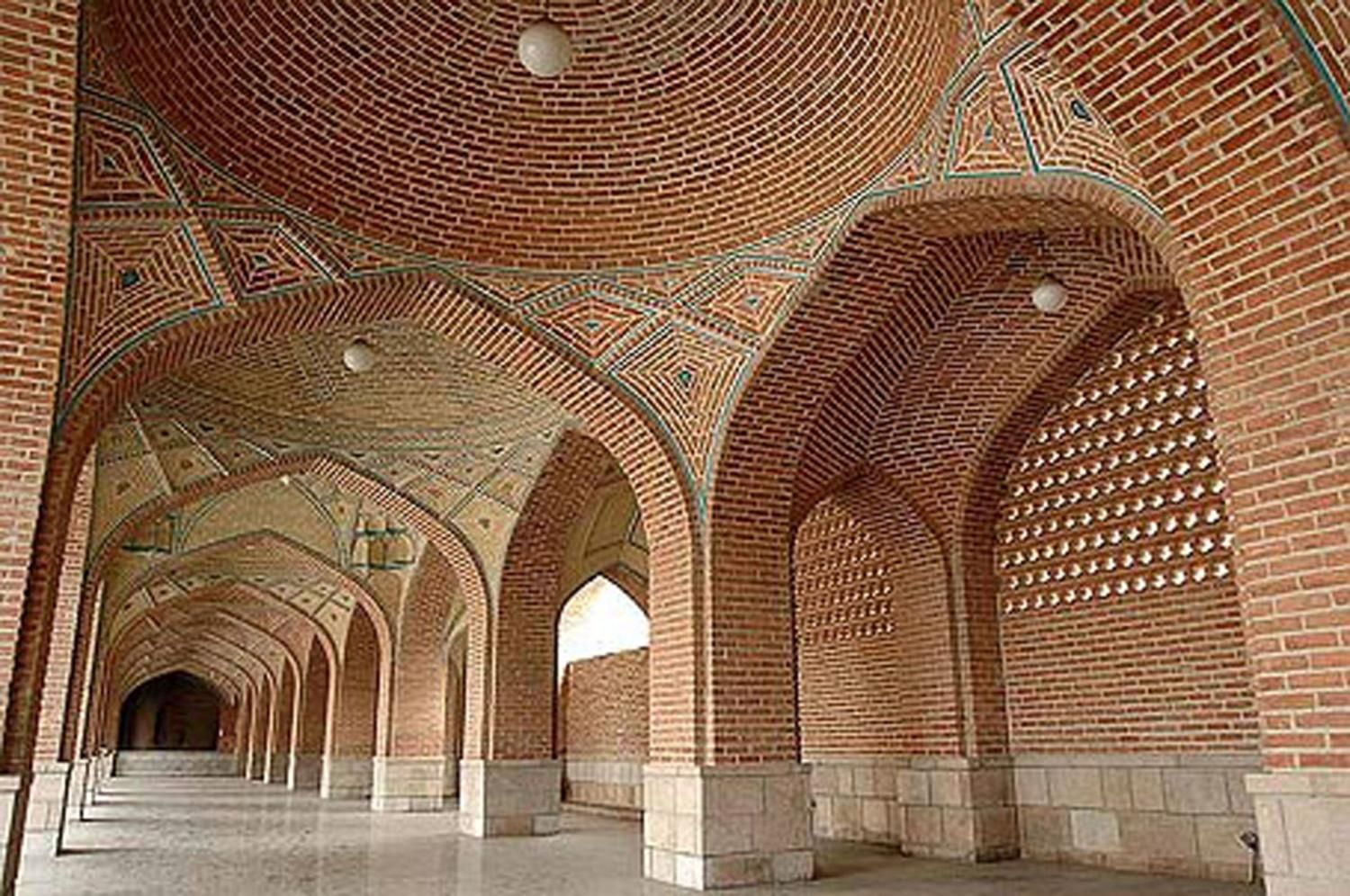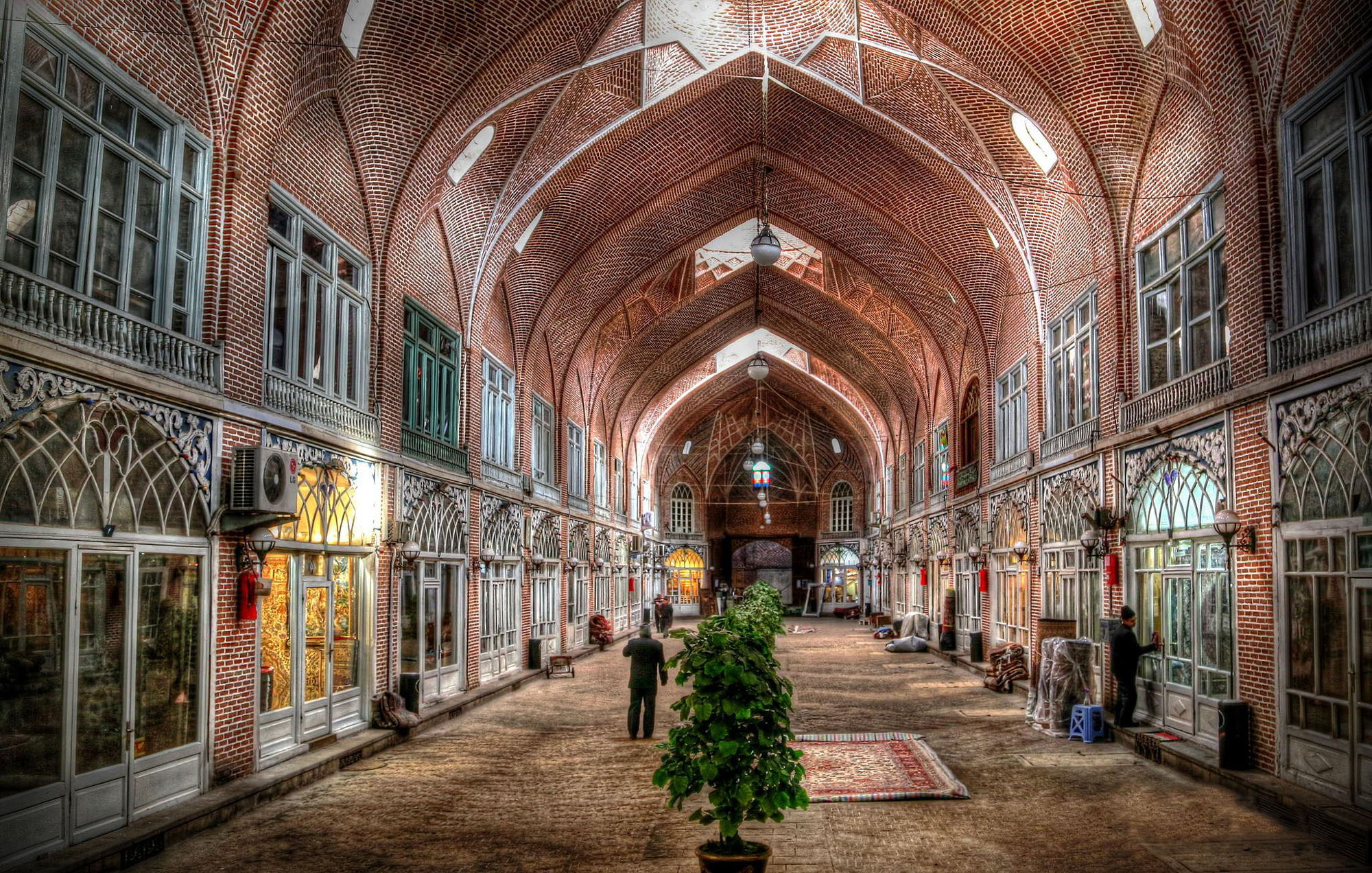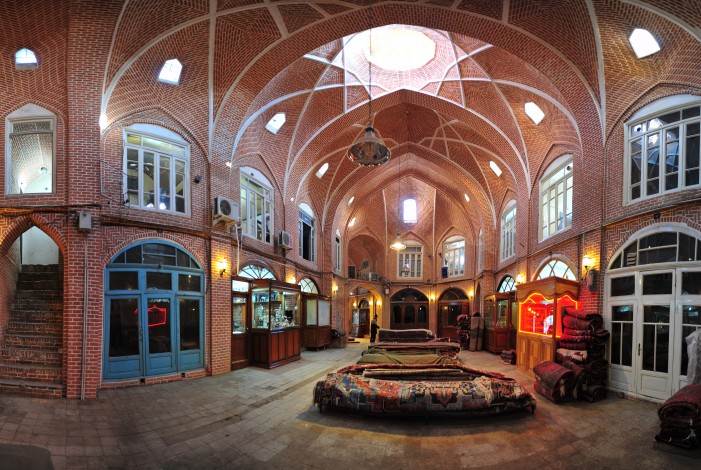The colorful and lively Bazaar of Tabriz is the economic center of the city. As one of the oldest and largest bazaars in Iran, Tabriz Grand Bazaar is a noble example of traditional eastern marketplaces. It is the first Iranian bazaar inscribed to the UNESCO heritage list.
Walking through this labyrinth, you can see the locals keeping the tradition of old Tabriz alive and the bazaar of Tabriz is still a recreational place.
All you Need to Know Before Going to Tabriz
Tabriz, the northern city of Iran and the capital of East Azerbaijan Province, is better known for its historical monuments. Tabriz gained its significance in the 12th century during the Seljuk era. Due to its strategic location, it became the capital of Safavid dynasty in the 16th century. In Qajar era, it was the second most important city after Tehran. The city is home to many cultural and historical landmarks including Jame Mosque, Blue Mosque, Grand Bazaar, and other cultural sites. The gathering of these landmarks designated the city as the capital of tourism of Iran in 2018.
Here we offer you a glimpse into the world known highlight of Tabriz; the Grand Bazaar.
Iranian Bazaar
Iranian traditional bazaars are not only a place to sell goods, but it is a complex of bazaars, mosques, bathhouses, schools, caravanserais and other social organization.
Bazaar has occupied a significant position among people as a place to communicate with each other and get informed of the latest news. Some religious ceremonies and educational activities are also held in schools and mosques which are built in bazaars. Caravanserais were also an inseparable part of the traditional bazaars as a resting place for the merchants. They carry the goods on animals to the courtyard of the caravanserai to unload them and then transfer the goods to different sections of the bazaar.
Tabriz Bazaar History
The establishment of this bazaar dates back to the 11 century. This bazaar has been a destination for many well-known travelers during history, such as Marco Polo, Ibn Battuta, Chardin, John Cartwright, etc. They mentioned the importance of its geographical and economic location and depicted the glory and prosperity of this bazaar in their travelogues.
Bazaar of Tabriz owes its reputation to its strategic location at the silk road, the most important trade route connecting east to the west. The grand bazaar had its heydays in the 16th century when Tabriz was the capital of Safavid dynasty.

Tabriz Bazaar Architecture
Tabriz Bazaar is a 1-sq km covered marketplace built based on the plan of typical Bazaars in Islamic cities across Iran. Tabriz Bazaar houses 6500 shops practicing 40 types of occupations. There are many sub-bazaars (Sarai) each dedicated to a specific occupation from gold and jewelry, copper, carpets and leather to spices, household items, shoes, and clothes.
There are 24 caravanserais, 22 Timcheh (domed hall), 35 Sarais, 20 Rasteh (a series of shops practicing the same occupation) and 11 corridors. The bazaar of Tabriz is covered by a vaulted ceiling decorated with stucco and red bricks. This structure has renovated many times during history specially after the earthquake in 1779. The recent renovation phase of the bazaar brought an architectural award for it, named Aqa Khan architecture prize, in 2013.

Fire Devours
The historical bazaar of Tabriz burned in a fire in 2019. It took more than 10 hours to extinguish the fire which caused 150 shops to be destroyed.
Bazaars Inside Tabriz Bazaar
Check out the list of significant parts of the bazaar where you can find whatever you want:
Amir bazaar – For gold and jewelry
Bolour Foroushan bazaar – For crystal home appliances
Shisheh Gar Kahane – For cosmetics and stationery
Kolahdoozan Bazaar – For hats
Spice Bazaar – Natural herbs and Persian flavors
Mozzafariye Caravansarai – Carpet and rugs
Sadeghiyeh Bazaar – Carpets and hand-woven rugs
Copper Bazaar – Home utensils in copper and silver
Caravanserai Mozafariye in Tabriz Bazaar
Mozaffarieh is the carpet lane of Tabriz bazaar. It is the most beautiful Timcheh in this bazaar dating back to 1888. This bazaar is named after the Qajarid prince, Mozafar al-din Shah who commissioned this construction. Caravanserai Mozafariye is home to the quality handwoven carpets which is different according to the knot size. By walking through this caravanserai, you can see the huge diversity of types of carpets.
Tips About Bazaar
If you are planning to go for shopping in Tabriz bazaar, then read on.
The grand bazaar of Tabriz is easily accessible by public transportations.
The bazaar of Tabriz has four entrances, choose the closest entrance to your favorite bazaar to save more time.
Tabriz takes pride in its carpets and leather, so try to have a look at them.
If you have heard of Tabriz crystals, you can buy the quality ones in this bazaar.

FAQ
Grand Bazaar, Tabriz, East Azerbaijan, Iran
There are several entrances to the Bazaar, you can take the best one according to your location.
Tabriz Grand Bazaar is located at the heart of Tabriz. You can plan to visit Arg-e Alishah, Tabriz firefighting Tower, Azarbayjan museum.
As Tabriz bazaar is the favorite shopping destination for both locals and visitors, you can find local restaurants close by. We offer you to try an authentic taste of Persian foods in Kasra Kebab restaurant, Shazdeh restaurant, Ghaem Kebab Restaurant. If you want to experience a little bit different atmosphere, try Wooden Cottage restaurant.
You can find economy class hotels close to the grand bazaar of Tabriz. Hotel Park, Azarbayejan Tabriz Hotel and Sina Hotel are 2-starts hotels which are situated at the 10-minute walking distance from the bazaar. Among the 3-star hotels, Ahrab Hotel, Behbood Hotel and Esteghbal Hotel provide comfortable accommodations for you.



Comment (0)